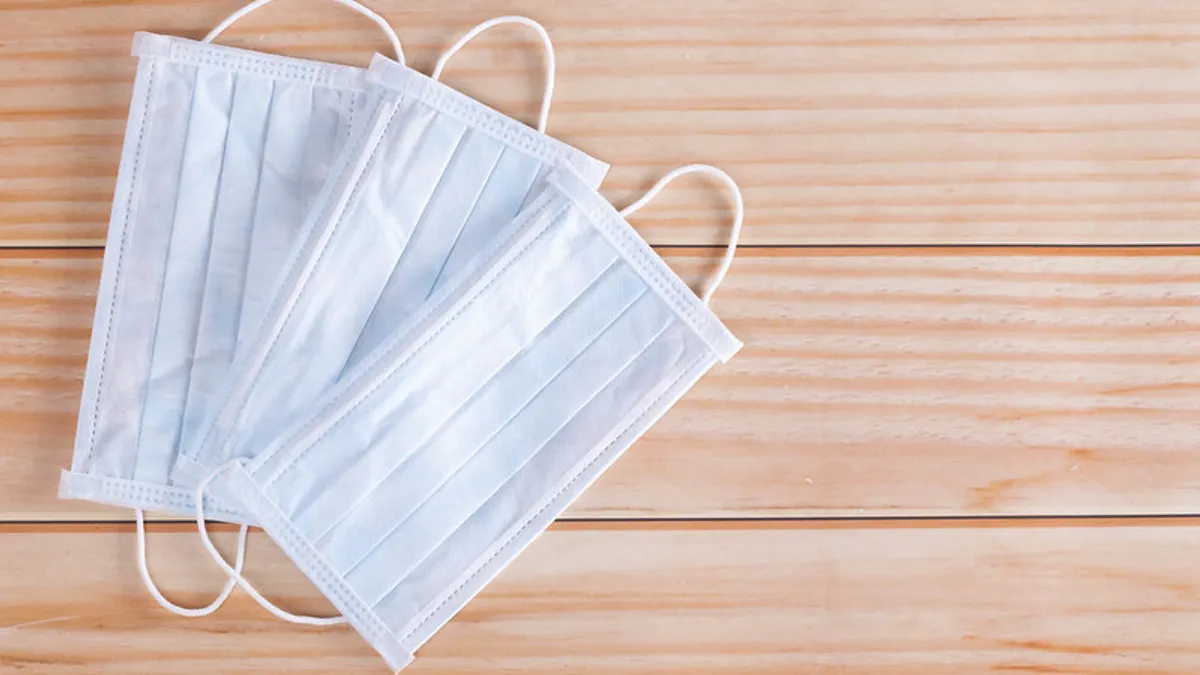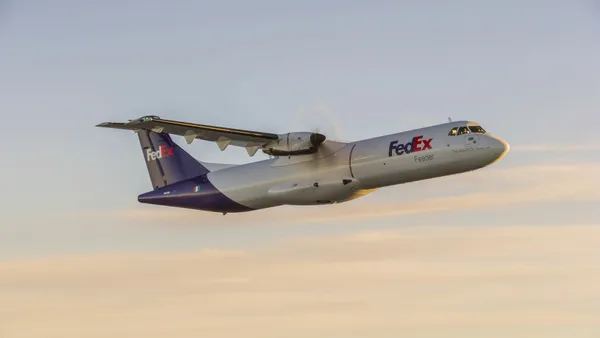Dive Brief:
- The Federal Emergency Management Agency (FEMA) is phasing out Project Airbridge, according to an announcement last week. Project Airbridge was a temporary program, under which FEMA bought dedicated cargo flights from carrier partners, transporting medical supplies from Asia to the U.S. from multiple suppliers. The project's last flight is scheduled to land in the U.S. June 30.
- FEMA partnered with FedEx, Landstar, NAC, Radiant and UPS, an agency spokesperson told Supply Chain Dive via email, and the personal protective equipment (PPE) was sourced from Cambodia, China, Honduras, Malaysia, South Korea, Thailand, Turkey and Vietnam.
- The first Project Airbridge flight landed in New York March 29. By June 18, when FEMA announced the phaseout, the project had facilitated around 250 flights, according to the agency. "Project Airbridge will remain an option" if the U.S. should need it again, FEMA's release said. The agency has a Memorandum of Agreement in place with its airline partners to help redeploy the program if needed, according to the spokesperson.
Equipment imported through Project Airbridge
| Item | Amount transported |
|---|---|
| Gloves | 937 million |
| Surgical masks | 111.4 million |
| Gowns | 53.1 million |
| Face shields | More than 2.5 million |
| N95 respirators | Nearly 2.5 million |
| Thermometers | More than 2.4 million |
| Coveralls | 1.4 million |
| Oxygen masks | 370,000 |
| Cannulas | More than 160,000 |
| Stethoscopes | 109,000 |
SOURCE: FEMA
Dive Insight:
FEMA's Unified Coordination Group approved the phaseout, "recognizing the PPE supply chain is stabilizing across the nation," the agency said. That group includes senior leaders representing state and federal interests, and in some cases, tribal governments, local jurisdictions, the private sector or nongovernmental organizations.
C.H. Robinson CEO Bob Biesterfeld told Supply Chain Dive that, even though the frenzy of sourcing PPE overseas the past few months may be calming down, PPE procurement is nowhere near any form of normal. The virus is still spreading and freight capacity remains shaken up. C.H. Robinson is part of the Minnesota Task Force that brought together public and private expertise to help the state acquire PPE.
"Whereas air was likely heavily used on the front-end to establish an immediate stockpile or respond to an immediate increase in demand, now there's the ability to start to balance the portfolio of modes being used," Biesterfeld said.
Traditionally, PPE would be transported to the U.S. via ocean carrier, taking 30-40 days, according to FEMA. The agency tapped private airlines to expedite the process as stocks of essential supplies began to dwindle. Instead of a month or more, the "airbridge" took two days.
And, as airfreight rates were soaring, the project allowed FEMA to reserve capacity. Global Head of Airfreight at Flexport Neel Jones Shah told Supply Chain Dive the sudden demand hike for PPE to ship via air "led to what was the fastest rising airfreight rates I have ever seen" as shippers bid for scarce capacity.
FedEx completed its first flight under the program in early April, transporting more than 450,000 protective suits from Vietnam to Texas. By then, UPS flights for Project Airbridge had already begun arriving in the U.S. Originally, UPS contributed 25 flights, that it also managed and brokered, slated to carry more than 3 million pounds of masks, surgical gowns, gloves, medical swabs and thermometers.
Airfreight rates from China and Hong Kong to the U.S. have fallen nearly 50% from their peak in mid-May, Maayan Citron, the head of corporate marketing at Freightos, told Supply Chain Dive in an email. Falling demand for shipping PPE via air is an important factor in the falling rates. "Most areas have been able to build up inventories of PPE, and can now use ocean to ship parts of the ongoing demand," Citron said.













